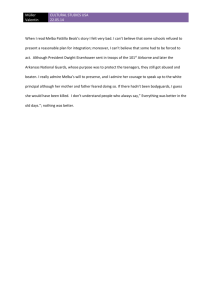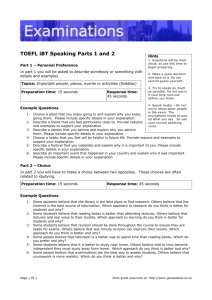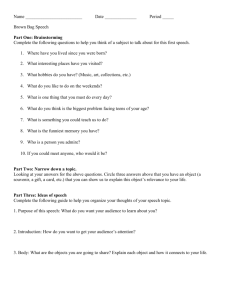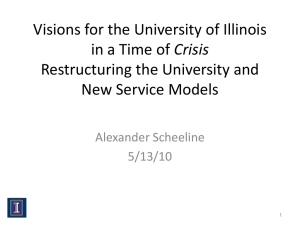EVALUATION OF ADMIRE GROWTH ENHANCEMENT IN WATERMELON AND CANTALOUPE
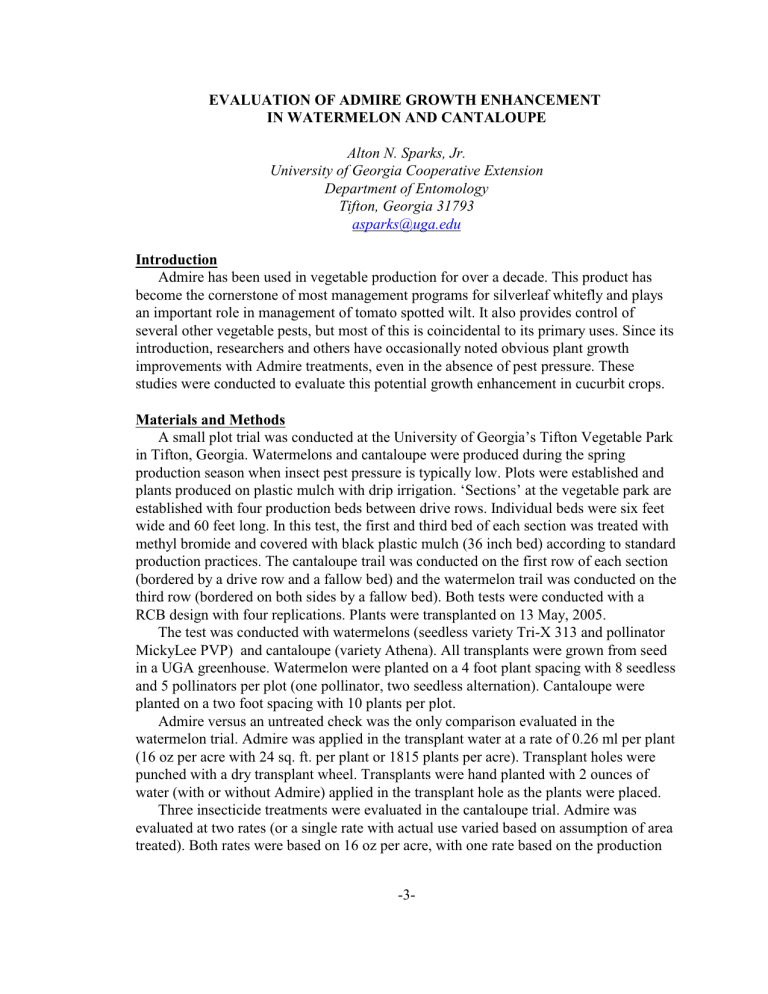
EVALUATION OF ADMIRE GROWTH ENHANCEMENT
IN WATERMELON AND CANTALOUPE
Alton N. Sparks, Jr.
University of Georgia Cooperative Extension
Department of Entomology
Tifton, Georgia 31793 asparks@uga.edu
Introduction
Admire has been used in vegetable production for over a decade. This product has become the cornerstone of most management programs for silverleaf whitefly and plays an important role in management of tomato spotted wilt. It also provides control of several other vegetable pests, but most of this is coincidental to its primary uses. Since its introduction, researchers and others have occasionally noted obvious plant growth improvements with Admire treatments, even in the absence of pest pressure. These studies were conducted to evaluate this potential growth enhancement in cucurbit crops.
Materials and Methods
A small plot trial was conducted at the University of Georgia’s Tifton Vegetable Park in Tifton, Georgia. Watermelons and cantaloupe were produced during the spring production season when insect pest pressure is typically low. Plots were established and plants produced on plastic mulch with drip irrigation. ‘Sections’ at the vegetable park are established with four production beds between drive rows. Individual beds were six feet wide and 60 feet long. In this test, the first and third bed of each section was treated with methyl bromide and covered with black plastic mulch (36 inch bed) according to standard production practices. The cantaloupe trail was conducted on the first row of each section
(bordered by a drive row and a fallow bed) and the watermelon trail was conducted on the third row (bordered on both sides by a fallow bed). Both tests were conducted with a
RCB design with four replications. Plants were transplanted on 13 May, 2005.
The test was conducted with watermelons (seedless variety Tri-X 313 and pollinator
MickyLee PVP) and cantaloupe (variety Athena). All transplants were grown from seed in a UGA greenhouse. Watermelon were planted on a 4 foot plant spacing with 8 seedless and 5 pollinators per plot (one pollinator, two seedless alternation). Cantaloupe were planted on a two foot spacing with 10 plants per plot.
Admire versus an untreated check was the only comparison evaluated in the watermelon trial. Admire was applied in the transplant water at a rate of 0.26 ml per plant
(16 oz per acre with 24 sq. ft. per plant or 1815 plants per acre). Transplant holes were punched with a dry transplant wheel. Transplants were hand planted with 2 ounces of water (with or without Admire) applied in the transplant hole as the plants were placed.
Three insecticide treatments were evaluated in the cantaloupe trial. Admire was evaluated at two rates (or a single rate with actual use varied based on assumption of area treated). Both rates were based on 16 oz per acre, with one rate based on the production
-3-
area (6 foot bed; 0.13 ml per plant) and the lower rate based on the area under plastic (3 foot bed; 0.065 ml per plant). The Admire treatments were compared with an at planting treatment with Platinum (8 oz per acre on 6 foot beds or 0.065 ml/plant) and a non-treated control. All treatments were applied in 2 oz of transplant water as previously described.
Vine lengths were measured in both tests on 27 May and 13 June. Individual vines were measured from the base of the plant to the tip of the terminal growth. One vine was measured on 5 individual plants in each plot in the cantaloupe trial and in the seedless watermelons. For the pollinator melons, one vine was measured on three plants in each plot.
Watermelons were harvested on three dates. On each date, all mature melons were harvested, counted and weighed. Data for seedless and pollinator melons were collected separately. Cantaloupe were also harvested on four dates with all mature fruit harvested on each date. On most dates, the fruit were counted and weighed; however, pickleworm damage and fruit decay prevented collection of harvest weights on the second harvest date.
Data for the watermelon trial were analyzed with the PROC TTEST procedure of PC-
SAS. Data for the cantaloupe trial were analyzed with the PROC ANOVA procedure of
PC-SAS. Where significant differences were detected (P<0.05), means were separated with LSD (P=0.05). Vine lengths were averaged for each plot prior to analyses. Yields were analyzed for number of fruit, weight of fruit and weight per fruit where possible.
Results and Discussion
Results for watermelons did indicate some significant differences, but the differences and trends were inconsistent. There was a consistent trend toward longer vines with the
Admire treatment, but differences were relatively minor and not significant (Table 1).
Vine lengths were not significantly different among treatments in the cantaloupe test
(Table 5). Number of fruit harvested was not significantly different for treatments in either test (Tables 2 and 6), with the strongest trend in total number of fruit harvested in cantaloupe showing the highest yield in the non-treated control. Total weight of fruit harvested was significant for the seedless watermelons, with Admire showing an increased yield (Table 3). However, the trend in the pollinator melons was non-significant but opposite, with the highest yield in the check. Data for average weight of individual fruit showed similar non-significant trends to the total harvest data for watermelon (Table
4). Cantaloupe weights did not significantly differ among treatments (Table 7).
Overall, differences detected in this test were generally minor, inconsistent and usually non-significant. There are no indications of growth or yield enhancement associated with any of the treatments evaluated. On the other hand, growth and yield differences have been occasionally detected with Admire treatments in the absence of any obvious pest control that would explain these differences. I have seen extremely obvious increase in cantaloupe vine length with Admire in the absence of pest pressure. More frequently, I have experienced little or no growth enhancement in the absence of pests.
While it is obvious that growth enhancement can occur with Admire, the conditions which allow or prevent this growth enhancement are not understood. Until this plant
-4-
response is better understood and can be manipulated to the growers advantage, Admire should only be used for pest control when needed and any growth enhancement that may occur considered an unexpected benefit.
Table 1. Average vine lengths in watermelon, Admire growth enhancement test,
Tifton, Georgia, 2005.
Treatment Vine length of Seedless Vine length of pollinators
Check
5/27*
12.60
6/13
80.60
5/27
15.83
Admire 18.10
85.50
19.25
No significant (P<0.05) differences were detected between treatments.
* Differences were detected at P = 0.1.
6/13
79.83
81.67
Table 2. Number of watermelons harvested per plot, Admire growth enhancement test, Tifton, Georgia, 2005.
Treatment Number of fruit harvested per plot
7/11 7/18 7/27 7/11+7/18 Total
Seedless melons
Check
Admire
Pollinators
5.00
7.50
7.75
6.50
7.25
8.00
12.75
14.00
20.00
22.00
Check 4.75
7.00
6.00
11.75
Admire 6.25
6.00
3.25
12.25
No significant (P<0.05) differences were detected between treatments.
17.75
15.50
-5-
Table 3. Weight of watermelons harvested per plot, Admire growth enhancement test, Tifton, Georgia, 2005.
Treatment Weight of fruit harvested per plot (lbs.)
7/11 7/18 7/27 7/11+7/18 Total
Seedless melons
Check
Admire
78.55*
121.25
121.35
112.90
112.58
139.50
Pollinators
Check 63.90
98.70
80.23
Admire 67.65
68.65
**Differences were detected at P<0.05 (TTEST).
* Differences were detected at P = 0.1 (TTEST).
35.65
199.90
234.15
162.60
136.30
312.48**
373.65
242.83
171.95
Table 4. Average weight of watermelons, Admire growth enhancement test, Tifton,
Georgia, 2005.
Treatment Average weight of individual fruit
7/18 7/27 7/11+7/18 Total 7/11
Seedless melons
Check 15.31
Admire
Pollinators
16.11
15.80** 16.70
17.79 18.02
15.65
16.79
15.93
17.05
Check 13.35* 13.87
13.67
Admire 10.86
11.43
11.04
** Differences were detected at P<0.05 (TTEST).
* Differences were detected at P = 0.1 (TTEST).
13.94
11.12
13.82
11.18
-6-
Table 5. Average lengths of cantaloupe vines, Admire growth enhancement test,
Tifton, Georgia, 2005.
Treatment Vine lengths
5/27* 6/13
Check
Admire
Admire low rate
9.40 a
12.05 a
11.40 a
56.90 a
57.40 a
59.25 a
Platinum 10.95 a 56.55 a
Means within columns followed by the same letter are not significantly different (LSD;
P=0.05).
* Differences were detected at P = 0.1.
Table 6. Mean number of cantaloupe harvested per plot, Admire growth enhancement test, Tifton, Georgia, 2005.
Treatment Number of fruit harvested per plot
Check
7/11 7/13
3.00 a* 3.75 a
7/18
3.75 a
7/21
2.75 a
7/11+7/13
6.75 a
Total
13.25 a*
Admire 2.75 a
Admire low rate 2.75 a
5.50 a
4.75 a
2.00 a
2.00 a
1.00 a
1.00 a
8.25 a
7.50 a
11.25 a
10.50 a
Platinum 1.25 a 6.00 a 2.00 a 0.50 a 7.25 a 9.75 a
Means within columns followed by the same letter are not significantly different (LSD;
P=0.05).
* Differences were detected at P = 0.1.
-7-
Table 7. Weight of cantaloupe harvested per plot, Admire growth enhancement test,
Tifton, Georgia, 2005.
Treatment Weight of fruit harvested per plot (lbs.) Weight per fruit
7/11 7/18 7/21 7/11 7/18
Check 16.05 a
Admire 17.80 a
Admire low rate 17.55 a
29.10 a
12.70 a
13.49 a
21.17 a
7.42 a
7.42 a
5.63 a
6.58 a
6.40 a
7.78 a
6.53 b
6.75 b
Platinum 7.90 a 14.14 a 4.16 a 6.13 a 6.96 b
Numbers within a column followed by the same letter are not significantly different
(LSD; P=0.05).
-8-
